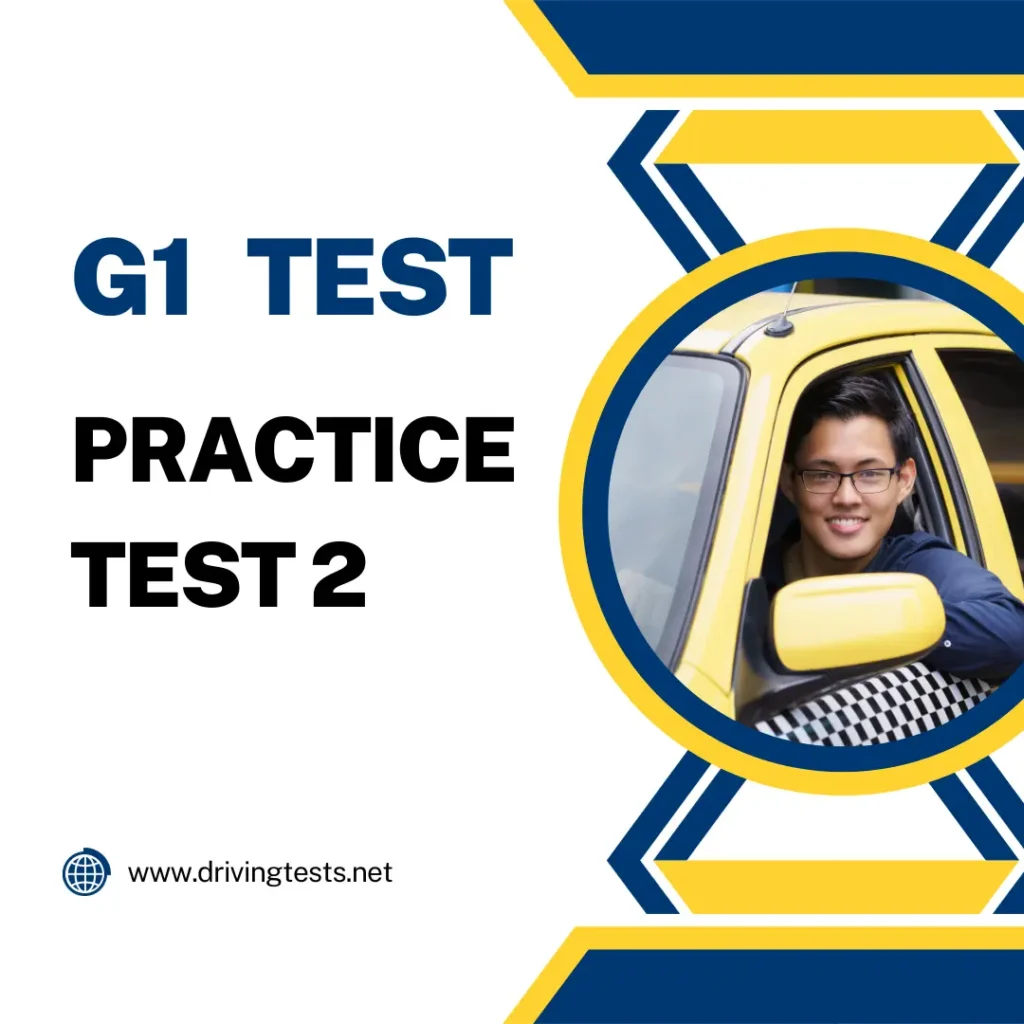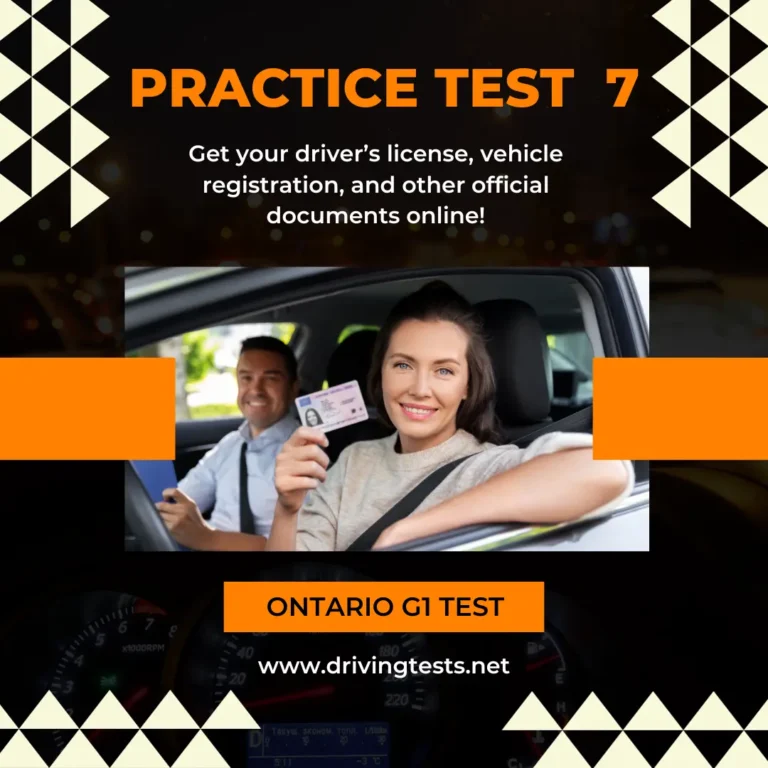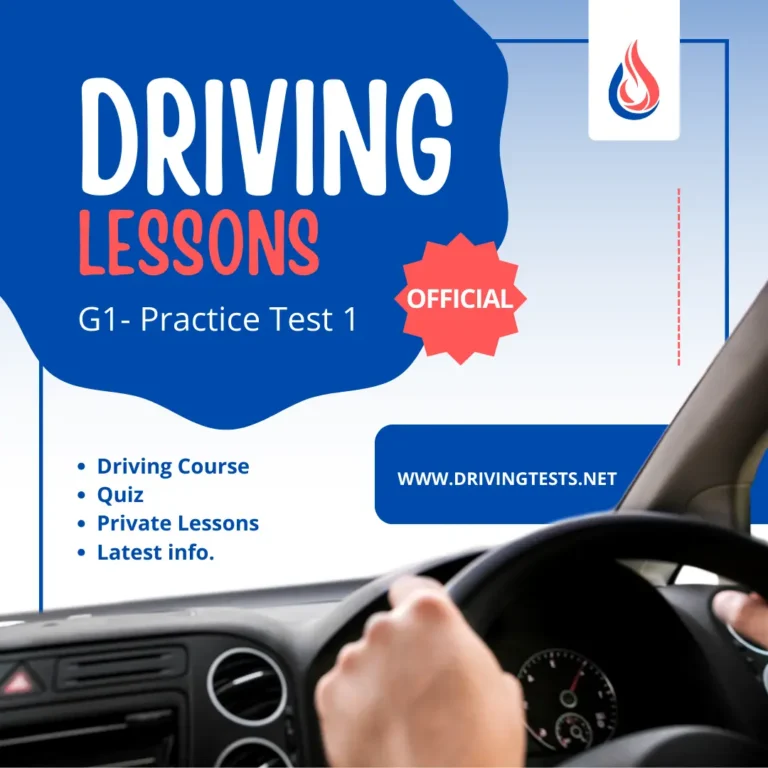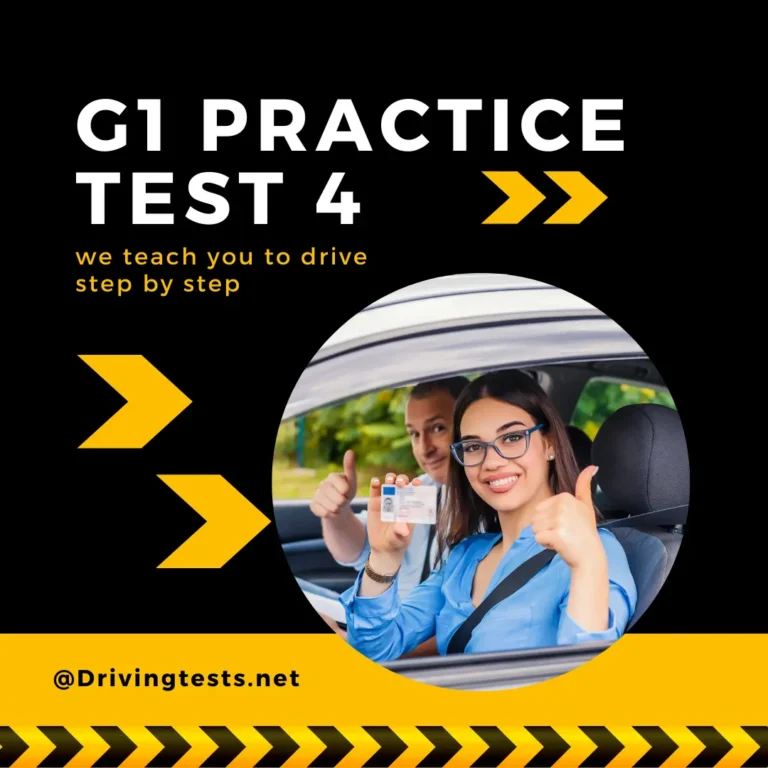G1 Practice Test 2
G1 Practice Test is the starting point for the process of getting a license in Alberta. This test measures your understanding of road rules, traffic signs, and safe practices. It is important to pass the G1 exam as it will help you become a more responsible driver. We will examine the Alberta G1 Practice Test 2 in this article. Its contents, its significance, and the best way to prepare for it are discussed.
Understand the Alberta G1 Practice Test
The Alberta G1 Test is designed to evaluate an individual’s driving knowledge. This test, which consists of multiple-choice answers, covers many topics, including traffic signs, road signs, and practical driving. Candidates must score at least 83.3% on the G1 Alberta test by answering 25 questions out of 30 correctly.
Alberta G1 Test: Advanced Challenges
Alberta G1 Practice Test comes after Practice Test 1 and is the second step of the preparation process. This test expands on the topics covered in the first practice exam to continue to measure a candidate’s level of proficiency. Explore the areas of focus in Practice Test 2:
- Road Signs and Symbols: It continues to build on the fundamentals covered in Practice Test 1 by introducing more complex road signs and symbols. The candidate will be presented with scenarios that demand a greater understanding of signs and symbols, including warnings, regulatory signs, etc. This segment requires candidates to be able to read signs when driving in complex situations.
- Traffic Rules and Regulations that are Complex: Candidates are challenged to put their traffic knowledge into practice in more complicated scenarios. Some questions will involve advanced intersection navigation or nuanced right-of-way issues.
- Road Safety Challenges: The segment looks beyond the basics to assess a driver’s ability to apply safe driving in difficult circumstances. Some questions will cover adverse weather conditions and sharing the road in different situations.
What is the importance of G1 practice Test 2?
Practice Test 2 has special significance as the second installment in the series. Why it’s important to include this practice exam in your daily study schedule:
- Candidates are presented with an increasingly difficult Practice Test 2. The practice test prepares the candidates for the actual G1 actual exam.
- Applications of Knowledge: Practice Test 2 challenges candidates to put their skills to the test in more realistic driving scenarios. The practice test not only improves driving skills but also reinforces theory.
- Identification Advanced WeaknessesPractice Test 2 helps candidates identify the specific concepts that they may have difficulty understanding. This allows study sessions to be focused while addressing weaknesses in advanced concepts and improving overall knowledge.
- How to boost confidence for the G1 TestConfidence plays a key role in achieving success on the G1 Test. With its tough questions, Practice Test 2 helps to build confidence as it prepares candidates for scenarios that are more complex and challenging.
- Alberta G1 test Advanced preparation: Practice Test 2 is a great way to prepare for your Alberta G1 exam. It includes advanced road signs and traffic laws, as well as challenging driving situations. Enhance your G1 readiness by improving your knowledge.
- Advanced Test G1 Questions and Answers: Take a look at a variety of G1 questions that include complex road signs, traffic laws, and driving techniques. These questions mimic the G1 content and offer a comprehensive experience.
- Road Signs Alberta: Practice Test 2 will provide you with questions to help you master the art of interpreting complex road signs. You can improve your understanding of the visual cues unique to Alberta roads.
- Test Advanced Regulations: Practice Test 2 allows you to familiarize yourself with Alberta’s more sophisticated traffic regulations and rules by exploring the specific questions. You can pass your G1 driving test by gaining a better understanding of the nuanced scenarios.
- Challenged Driving Situations in Alberta: Prepare yourself for the unexpected with the Alberta G1 Practice Test 2. Questions that simulate bad weather, intersections with complex traffic patterns, and obstacles will help you navigate challenging driving scenarios in Alberta. Alberta G1 Practice Test 2. Prepare yourself for anything with this practice test.

Mastering the G1 exam becomes even more crucial as you continue your journey to obtain your driver’s license in Alberta. Alberta G1 Practice Test 2 with its emphasis on advanced traffic signs, complicated rules of the road, and challenging scenarios, is crucial to your preparation. You can increase your G1 success rate by strategically including this practice test in your daily study schedule. It will also help you become a better driver who is more comfortable and confident on Alberta’s varied and dynamic roads.






